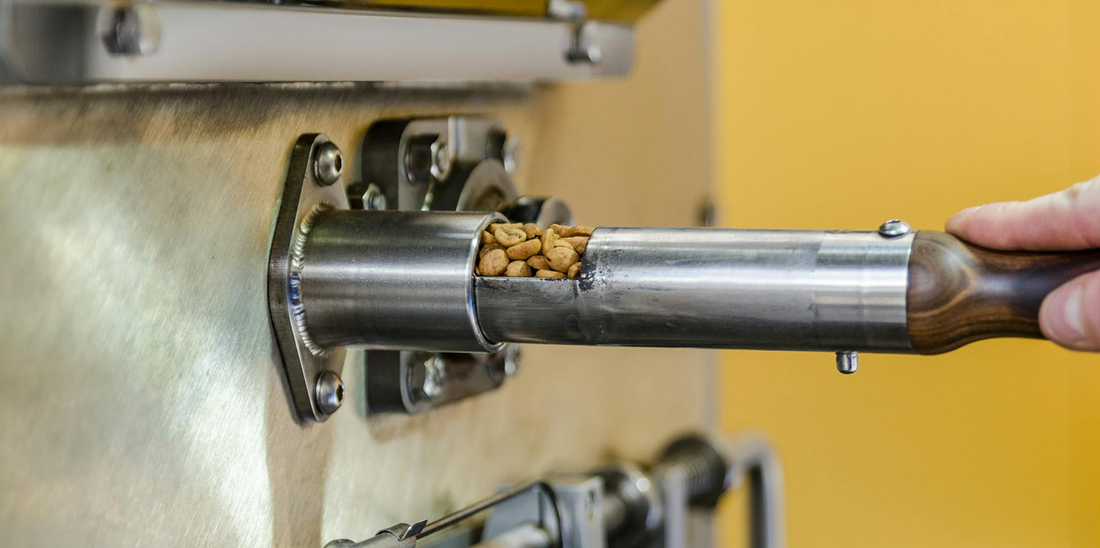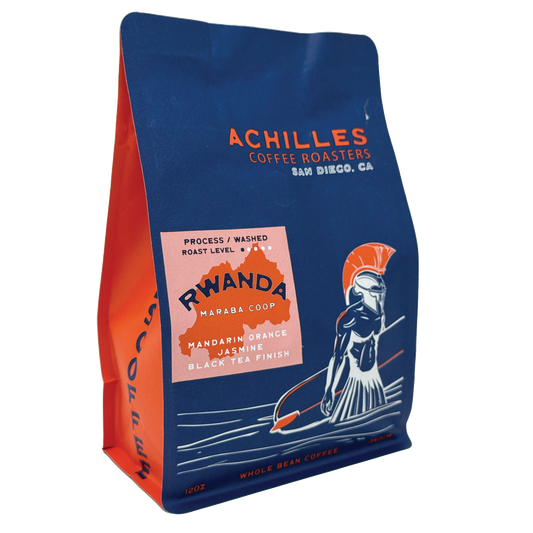Our newest limited offering is a coffee with two unique qualities, an Anaerobic Natural processed Caturra Chiroso coffee variety from Colombia. The result is a juicy full bodied coffee bursting with tropical fruit notes. If you are a coffee drinker in the search of new and unique coffee profiles El Diviso form producer Nestor Lasso will not disappoint. So let’s take a closer look at what makes this coffee so unique.
The Caturra Chiroso coffee variety is a unique cultivar that represents a hybrid or mutation of the Caturra variety and the Chiroso variety, both originating from Colombia.
Origin and Genetics:
The Caturra variety is a natural mutation of the Bourbon variety, known for its compact size, high yield, and good cup quality. Caturra was first discovered in Brazil in the early 20th century and later became popular in Colombia and other coffee-growing regions.
The Chiroso coffee variety is believed to be a genetic mutation or a unique strain of the Bourbon lineage, specifically adapted to the high-altitude and unique microclimates of Antioquia, Colombia. It is known for its elongated beans and distinct floral and fruity flavor profile.
Flavor Profile
Caturra Chiroso coffee variety typically combines the best characteristics of both parent varieties. It often has a complex flavor profile with bright acidity, floral notes (such as jasmine or orange blossom), and fruity undertones like citrus, stone fruits, and tropical fruits.
It may also exhibit a honey-like sweetness, a tea-like body, and a clean finish, making it a highly sought-after coffee among specialty coffee enthusiasts.
Growing Conditions
The Caturra Chiroso coffee variety is primarily grown in the high-altitude regions of Colombia, particularly in Antioquia. The altitude, climate, and soil conditions in these areas are ideal for producing high-quality coffee beans with a unique flavor profile.
Farmers often use specific cultivation and processing methods, such as washed, honey, or natural processing, to bring out the distinct flavors of the Caturra Chiroso variety.
Rarity and Appeal
This variety is relatively rare and is often sought after by specialty coffee roasters and coffee lovers looking for something unique and exotic. It is particularly valued for its complex and nuanced flavor profile, which can vary depending on the terroir and processing methods.
Anaerobic Fermentation
The producer, Nestor Lasso, has taken this rare variety to the next level by using an anaerobic natural processing method. For those who are not familiar with the relatively new method of coffee processing here is a breakdown of what it involves.
Anaerobic means "without oxygen." In this step, freshly picked coffee cherries are placed in sealed, oxygen-free containers or tanks, typically stainless steel or plastic. The containers are designed to prevent oxygen from entering, creating an anaerobic environment.
Fermentation occurs as the naturally occurring microbes (such as yeasts and bacteria) inside the coffee cherries break down sugars and other compounds. This fermentation process is controlled, allowing the coffee cherries to develop unique flavors.
By limiting oxygen, anaerobic fermentation often results in different chemical reactions compared to traditional aerobic (oxygen-exposed) fermentation, leading to distinct and sometimes more intense flavors.
Natural Drying Process
In the natural process, after fermentation, the entire coffee cherry (including the pulp, skin, and mucilage) is dried in the sun, typically on raised beds or patios. This drying process can take several weeks.
The beans are dried with the cherry still intact, allowing the sugars and compounds from the fruit to infuse into the coffee bean as it dries. This contributes to fruity, sweet, and sometimes wine-like flavors in the final cup.
Flavor Profile
The combination of anaerobic fermentation and natural drying can lead to bold, fruity, and complex flavor profiles that are often quite different from traditionally processed coffees. Common flavor notes include:
Tropical and stone fruits (like pineapple, mango, or peach)
Bright, juicy acidity
Wine-like or fermented qualities
Sweetness with hints of spices or florals
Sometimes, the process can also introduce funky or experimental flavors that are unique to anaerobic fermentation.
Why It’s Unique
Control over Fermentation: By controlling the fermentation environment (temperature, pH, and time), producers can create specific flavor outcomes in the coffee. This makes anaerobic natural process coffees highly experimental and appealing to specialty coffee lovers looking for something unique.
Complex and Intense Flavors: The anaerobic fermentation often intensifies certain flavors, making the coffee richer and more complex than traditional processing methods. It can enhance sweetness, fruitiness, and body in the coffee.
Challenges and Risks
Requires Precision: Anaerobic fermentation needs to be carefully monitored because it can easily lead to off-flavors if not done correctly.
Longer Processing Time: The natural drying process is slow and can be affected by weather conditions, requiring meticulous attention from the coffee producer to avoid spoilage or mold.
Cost and Labor: Because this method is more labor-intensive and requires specialized equipment for anaerobic fermentation, it often leads to higher priced coffee by the time it reaches the shelf of your local coffee roaster.
Here are the steps of the process that went into our Nestor Lasso Chiroso offering:
- The coffee is picked carefully to get only very ripe cherries that tend to be between 24 and 26 Brix. The over and under ripe cherries are removed (hand sorted).
- The coffee undergoes an oxidation process for 48 hours in plastic cans, where the leachates and the cherries are mixed. At the end of this process the pH of the coffee is 4.5.
- Floating proces -The coffee is floated to rid impurities and any hollow beans and unwanted materials. This is done with cold water (10-12 degrees Celsius).
- Thermal shock - The cherries are washed with water at 50 degrees Celsius and immediately introduced into plastic cans.
- Anaerobic fermentation - The cherries are stored in sealed cans for 80 hours at 35 degrees Celsius. A saccharomyces cerevisiae yeast type T58 is sprayed to the cherries (1g of yeast per 5kg of cherry). This yeast is commonly used in the beer brewing industry to strengthen beer profiles.
- Drying process - The coffee is removed from the cans and taken to a mechanical drying system to dehydrate the cherries during 12 hours. Finally, it is moved to a parabolic drying system for approximately 15 days or until target moisture is reached.
The experimental meeting of the Caturra Chiroso coffee variety and Anaerobic Natural processing results in a distinctive and adventurous flavor profile. If you are looking to explore a new and unique coffee try our Nestor Lasso El Diviso Chiroso, but hurry this offering won’t last long. If it is sold out be sure and check out our other limited offerings.








